Roads in Perspective - Quick Guide.
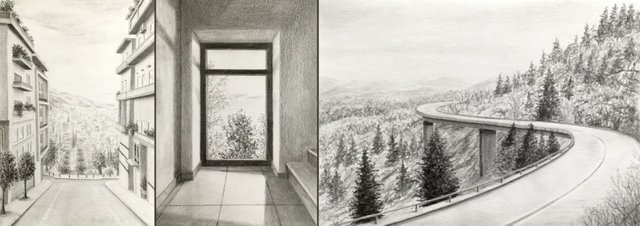
Linear perspective is an important drawing fundamental.
In this quick guide, I will focus on roads in perspective.
Straight Road
Straight road is the easiest to draw for beginners.
Place a horizon line and decide where you want to put the vanishing point.
Then, draw two lines from the vanishing point toward you (below the horizon).
You can draw more lines for pavement.
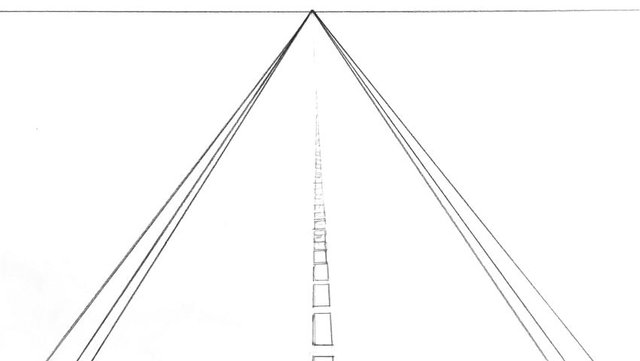
This is simple. In reality, in most cases, you will NOT see the horizon.
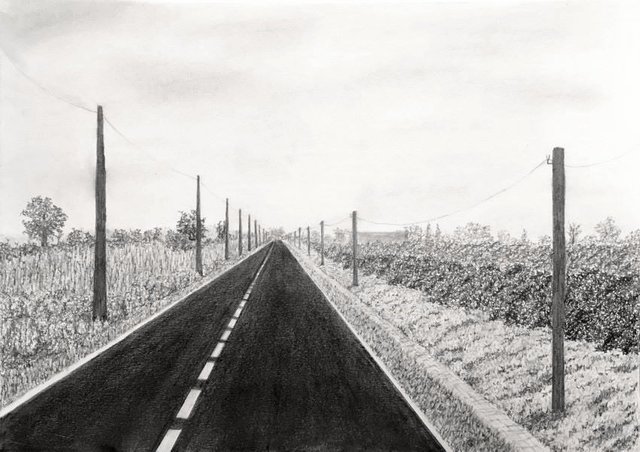
Uphill Road
When you want a road that is going up, you should draw the vanishing point ABOVE the horizon line.
The vanishing point above the horizon is just for the road.
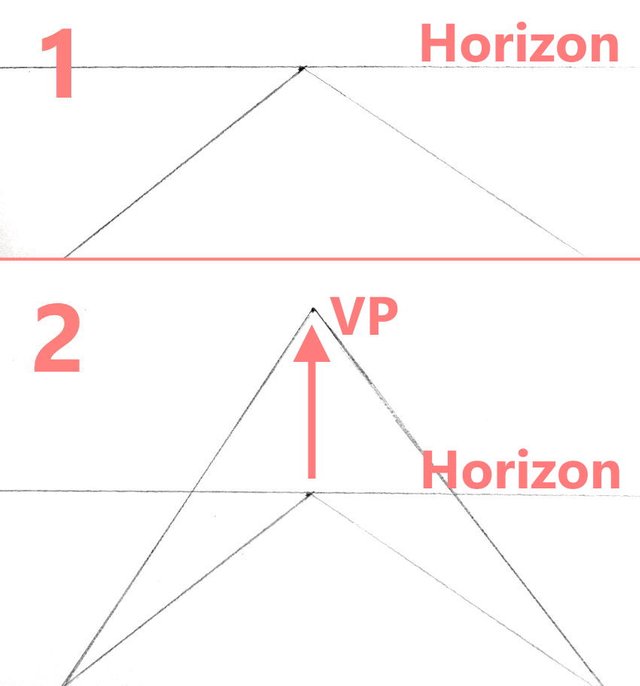
After the initial sketch, render it:
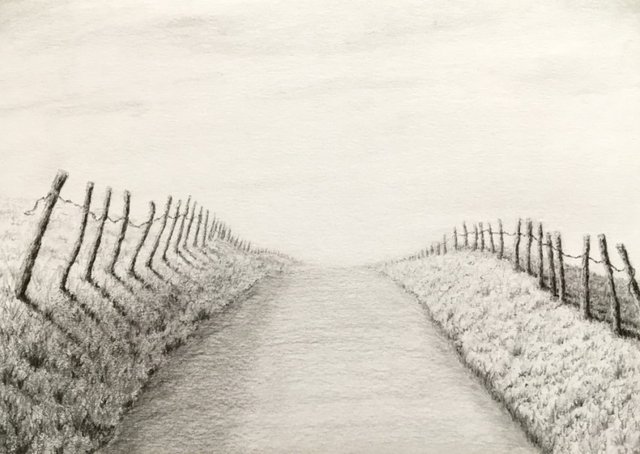
Downhill Road
For a road going down, draw the vanishing point BELOW the horizon:
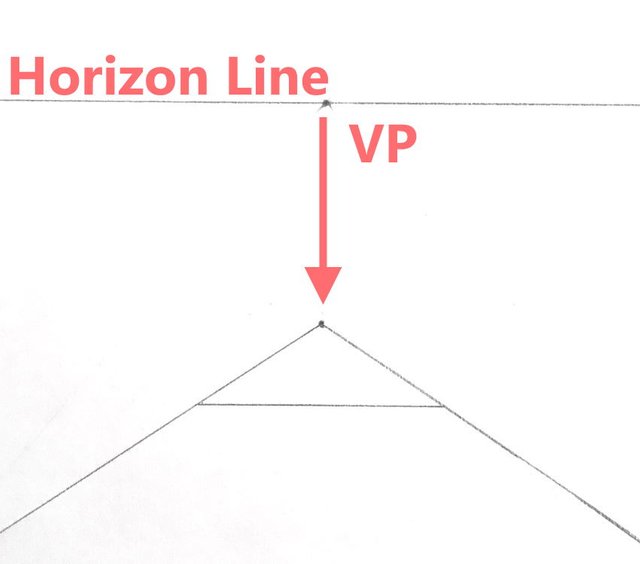
The road and the bottom of the buildings (including pavement and base of trees) go to the lower vanishing point.
The rest (buildings, windows, and ext.) go to the vanishing point on the horizon!

While you can render with lines, I usually prefer to render in a realistic way.
If you are new to realism, here is my beginners guide to drawing in a realistic style: https://ranartblog.com/blogarticle03.html
Curved (Winding) Road
For a curved road, start by drawing a straight road.
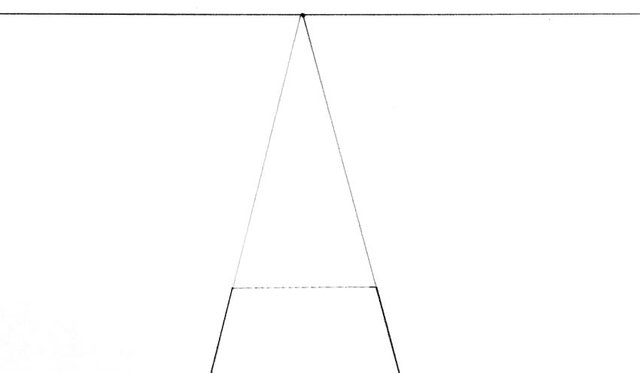
Then, decide on the place you want it to curve, AND to where the curve goes (a new vanishing point).
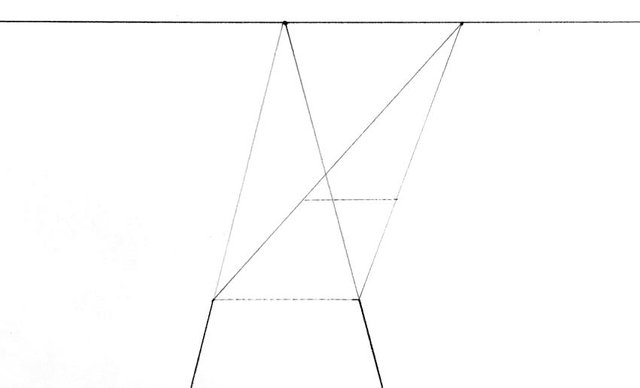
Next, do this repeatedly.

Lastly, curve the lines:
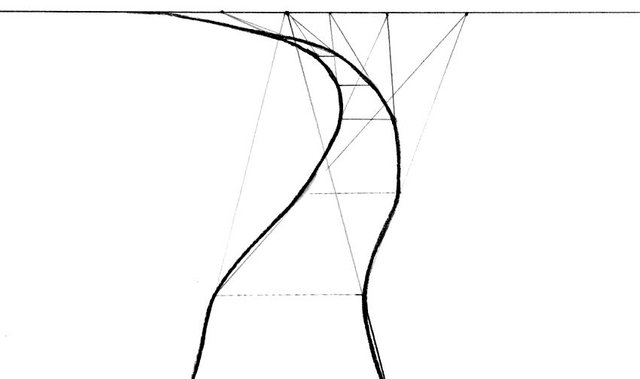
Another example.
First, plan the road:
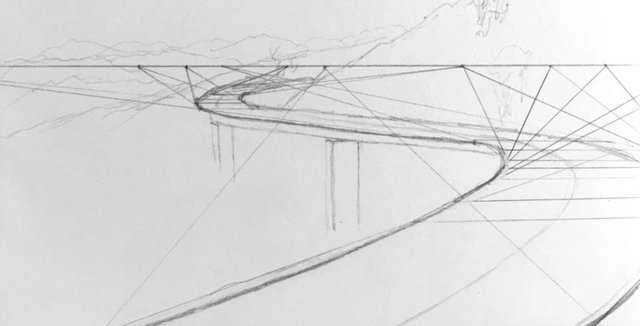
Then, render it:
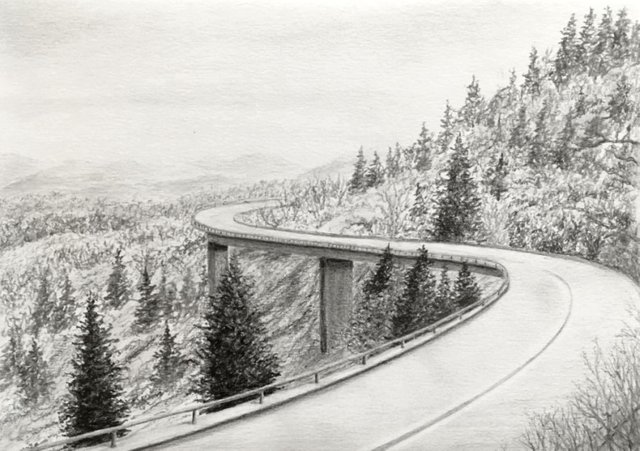
Uphill Winding Road
You can draw a curved road that goes uphill or downhill. Just put the vanishing points above or below the horizon.
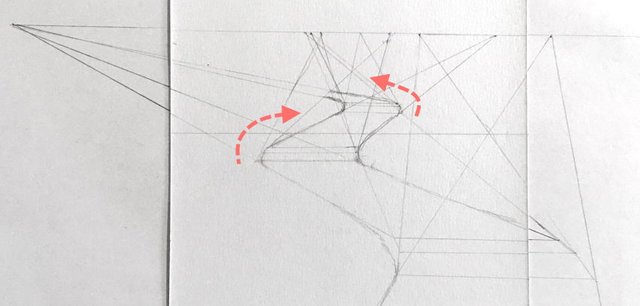
And, render it:
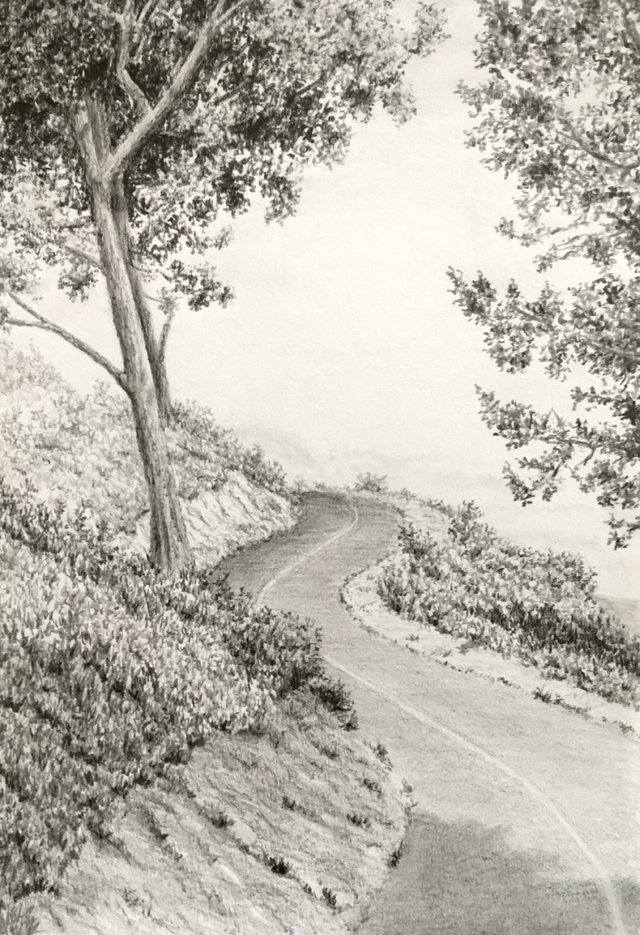
Road from Above
Drawing from above is relatively easy. Just remember that your "depth" now is the height of objects.
Draw a vanishing point and the base for your buildings and road:
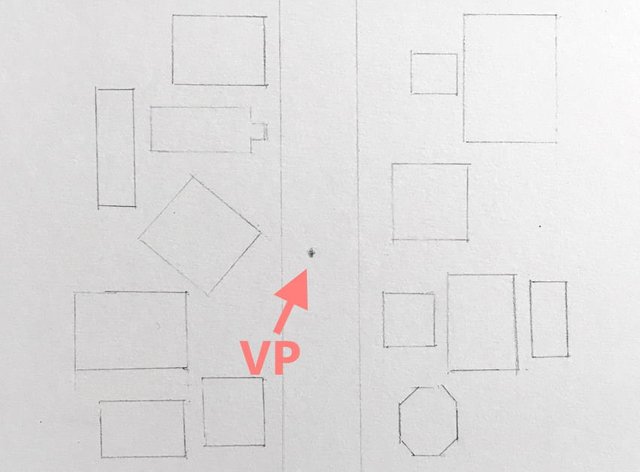
Next, draw lines from the vanishing point for the height of buildings:
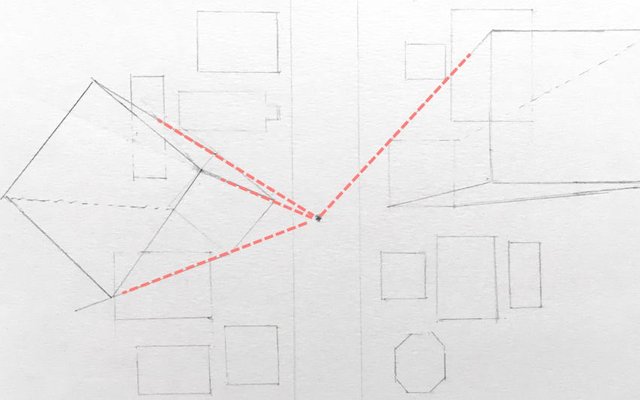
Lastly, render.
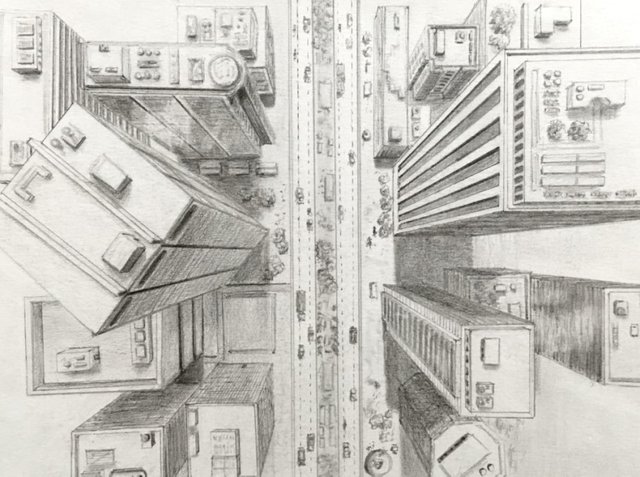
Bonus: Car on Road
You can use two vanishing points to draw a car:
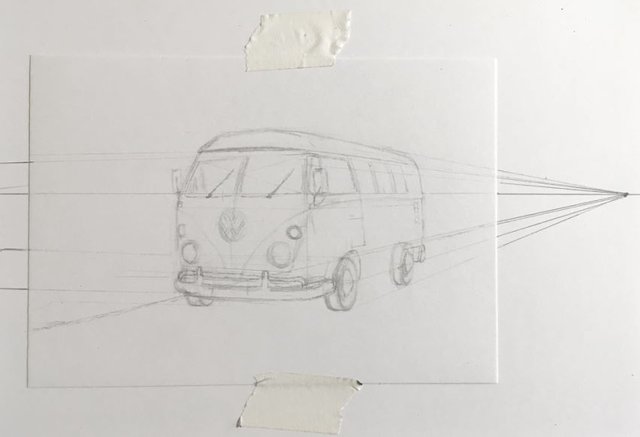
Then, finish your drawing.
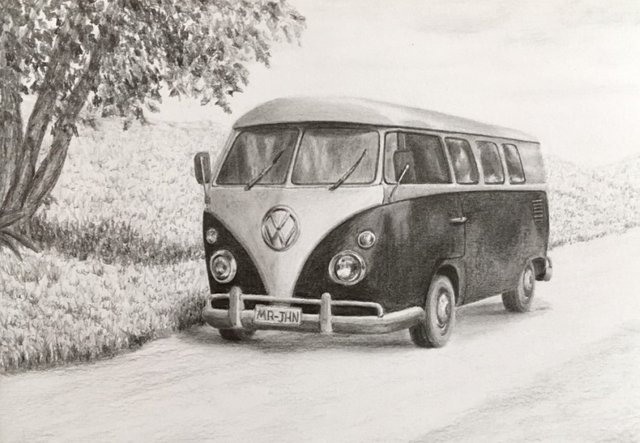
This short guide is from my comprehensive guide on drawing from perspective, which you can read here: https://ranartblog.com/blogarticle19.html
If you have any question, feel free to ask.
Ran
Website: https://ranartblog.com/
Tutorials: https://ranartblog.com/blog.html
Instagram: https://www.instagram.com/ran_art_blog/
Pinterest: https://www.pinterest.com/ranartblog/
Dear painter, I loved your way of presenting your drawings from an artistic point of view, in which you show graphic techniques and the process of creative technique that shows the three-dimensional drawing as if it simulates reality. It takes me to the depths, and I find myself in a state of awareness, diving and diving, searching for the unknown behind the lines, and looking closely at the dark areas, as if there was a secret hidden by the creative painter, in which he put lines from his memories and colored them with a mixture of contradictory feelings and sensations, and we do not forget his final touch, ending it with the imprint of his soul.
Very useful going to do this as practice:)
Thank you!
If you have any question, feel free to ask, here, Instagram, Pinterest, email, etc.
Good Practice.
I agree :)
Thanks for the great lesson. I see that sometimes you need to use a ruler when it comes to realism, I have never done this before when it came to drawings, not drawings. My first art teacher used to hit us on the hands if he saw a ruler in our hands lol. He was a senile person that was hard to argue with, and to be honest, when I saw his art at the exhibition, I thought that this was not something I should strive for and gave up drawing. Only today, I understand that he was too demanding of himself and too free from third-party opinions, he did what his heart prompted and it was cool, but hard for me to understand and perceive at that moment.
When learning perspective, I tell my students that they HAVE to use a ruler, while I draw the examples for them freehand.
More crazy for them is that I ALWAYS draw to their direction.
They are amazed how I draw upside down, so they can see what I am doing.
Learning perspective with rulers is great to get used to how things should look like. Once you master perspective, you can stop using rulers.
For example, when I teach concept art and product design, we NEVER use rulers, vanishing points, reference images, etc.
It is 100% from imagination.
But that is possible because they already learned perspective and realism.
Perspective drawing is the most important drawing fundamental in my opinion, but I do not like to draw in perspective, it is just a part of anything you draw.
For example, to draw the example below correctly, you must know perspective.
It is all about understanding the amount and direction of foreshortening, and always imagine where the horizon line is.
Yes, logic dictates that the shape of the bottom of the glass should be similar to the shape of the edge of the glass, but this is not so.
Indeed. Logic wants us to draw isometric, but because of our optics (the way we see thing), we actually see it in perspective.
Seeing and translating what you see on paper are slightly different things :). It seems to me that I perfectly hear the music that my brain remembers, but when I open my mouth, I cannot reproduce these notes.
I can promise you one thing: you do NOT want to hear me sing :o)
The fact is that for some time now I only listen to the original works of my children who write music, compose and perform songs and rap, and I don’t listen to anyone else, because, my friend, you could not be on the list of my audio recordings, but not because your voice does not meet my criteria :).
That is great. They are artistic. Music is amazing, it is good they are good at it.